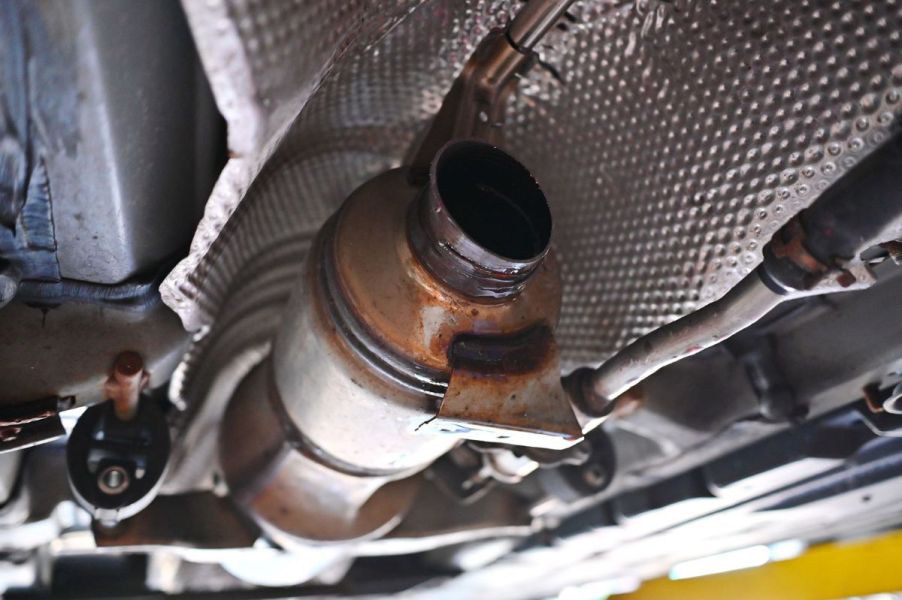
5 Symptoms of a Broken, Clogged, or Stolen Catalytic Converter
Car maintenance is a complex topic as many different car parts need to be kept in good condition, or else drivers will face issues down the road. This is true for catalytic converters too, which are often talked about in terms of theft but play a vital role in a car’s exhaust system. Here are five symptoms drivers should look for, as they can point to a broken or even stolen catalytic converter.
1. Warning light on the dashboard is the easiest indicator of a stolen catalytic converter
One of the symptoms that drivers should always be wary of is the check engine light, and according to Auto Evolution, this may be a sign that the car’s catalytic converter is faulty. That said, the check engine light can mean a lot of things, as several other issues can trigger it.
For example, the gas cap being loose may trigger it, and so can faulty oxygen sensors. Regardless, drivers should take the check engine light seriously and bring their vehicle in. The issue is clear if drivers get a check engine light along with other symptoms that point to a catalytic converter problem.
2. Loss of power
According to AutoZone, another common symptom of a clogged or broken catalytic converter is the loss of power. This usually happens because of a buildup of carbon or grime in the catalytic converter. This issue is why drivers who care about getting the most performance out of their car should routinely maintain their car’s catalytic converter by keeping it clean and clear.
3. Dark exhaust smoke
Catalytic converters’ primary purpose is pollution control. It does that by cleaning up the exhaust from the car’s engine so that the exhaust released into the air is cleaner than before. This is a big reason why catalytic converters can get clogged up, and it’s also why dark exhaust smoke is a symptom of a faulty or missing catalytic converter.
However, dark exhaust smoke doesn’t happen exclusively because of faulty catalytic converters. Dark exhaust smoke can happen because of a rich fuel mixture, which can be caused by several other problems, such as faulty oxygen sensors. Regardless, dark exhaust smoke is generally bad for the environment, so drivers should take this symptom seriously.
4. Increased fuel consumption
Another symptom of a faulty catalytic converter is an increase in fuel consumption. Once again, this happens largely because the catalytic converter is clogged. Since it’s clogged, some exhaust gets stuck in the engine, and that can reduce the car’s fuel economy. As a result, cleaning a clogged catalytic converter can improve a car’s fuel mileage. There’s also the option of replacing an old CC with a new one.
That being said, removing the car’s catalytic converter shouldn’t affect the car’s gas mileage, so this symptom is not a symptom that the catalytic converter was stolen. On top of that, this symptom may be tough to spot since most drivers don’t pay that much attention to their car’s real-world fuel economy.
5. A rotten smell (sulfur or eggs)
A symptom that’s easier to spot is a rotten smell, such as sulfur or rotten eggs. This happens because of the chemicals that a catalytic converter uses. However, like many other symptoms, this isn’t a symptom that’s exclusive to catalytic converters.
A car may have this type of smell for several reasons, so it’s important to narrow down where the odor is coming from. However, even if the rotten smell comes from the exhaust, it might still be caused by other issues, such as the engine overheating.
It’s important to know these signs so that if you do have a broken, clogged, or stolen catalytic converter, you know exactly what to look out for.




